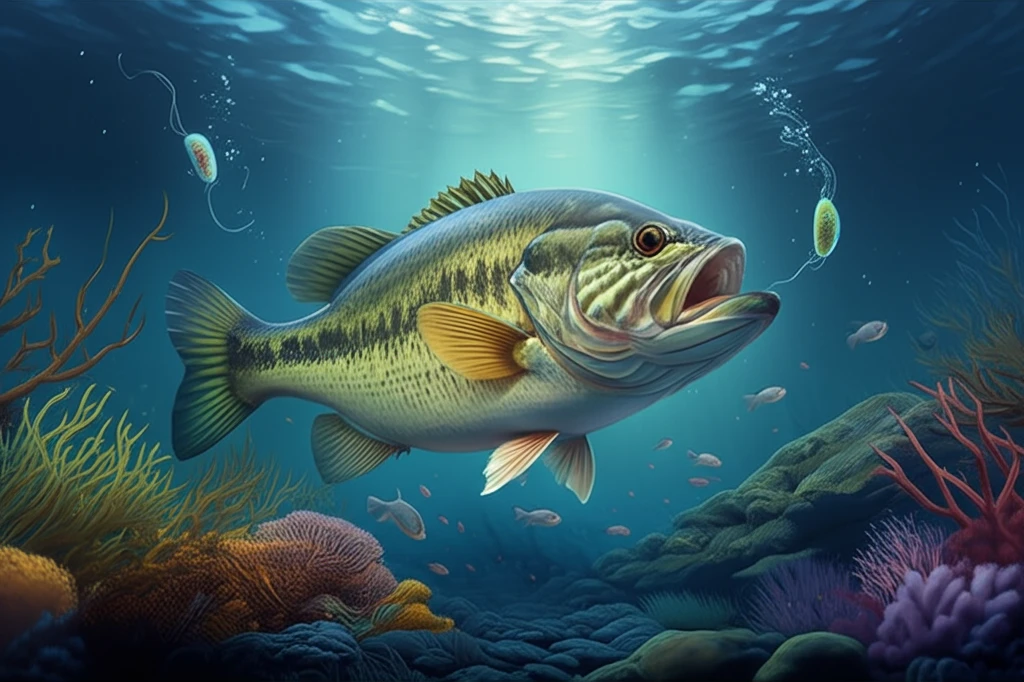
Largemouth Bass Parasites: The Unseen World Affecting Your Favorite Fish
"Discover how molecular characterization of Neoechinorhynchus cylindratus unveils parasite's impact on largemouth bass in Northern Mexico, and what it means for freshwater ecosystems."
Largemouth bass, a favorite among anglers, are not only susceptible to various environmental stressors and habitat changes, but they also play host to a variety of parasites. These tiny organisms, often unseen, can significantly impact the health and population dynamics of these fish. Among the parasites that affect largemouth bass, the acanthocephalan Neoechinorhynchus cylindratus has garnered attention due to its prevalence and potential effects.
A recent study published in the Journal of Helminthology has shed light on the molecular characterization of Neoechinorhynchus cylindratus in largemouth bass populations in Northern Mexico. This research not only identifies the presence of this parasite but also delves into its genetic makeup and phylogenetic relationships with other similar species. By employing molecular techniques, scientists have been able to gain a deeper understanding of the distribution, evolution, and potential impact of this parasite on freshwater ecosystems.
The study focuses on specimens collected from the Purification River in Tamaulipas, Mexico. Researchers examined the genetic sequences of Neoechinorhynchus cylindratus, comparing them with other congeneric species found in the same freshwater system, such as Neoechinorhynchus emyditoides and Neoechinorhynchus panucensis. The findings challenge existing classifications and reveal a complex web of parasitic relationships, highlighting the need for further taxonomic revisions.
What are the Key Findings About Largemouth Bass Parasites?

The research published in the Journal of Helminthology provides several key insights into the Neoechinorhynchus cylindratus parasite and its impact on largemouth bass populations. The study employs molecular characterization techniques to understand the genetic makeup and phylogenetic relationships of this parasite, challenging previous classifications and revealing a more complex understanding of parasitic relationships.
- Extended Distribution Range: Confirmed the presence of Neoechinorhynchus cylindratus in Northern Mexico, expanding its known range.
- Phylogenetic Insights: Molecular analysis revealed that the genus Neoechinorhynchus is not monophyletic, suggesting a need for taxonomic revision.
- Species Relationships: Demonstrated that Neoechinorhynchus cylindratus, Neoechinorhynchus emyditoides, and Neoechinorhynchus panucensis, found in the same region, do not share a common ancestor.
- Genetic Divergence: High levels of genetic divergence were observed between the studied species, highlighting the complexity of species identification and classification.
Why This Research Matters
Understanding the parasites that affect largemouth bass populations is crucial for maintaining the health and stability of freshwater ecosystems. The molecular characterization of Neoechinorhynchus cylindratus in Northern Mexico not only expands our knowledge of this parasite but also highlights the need for taxonomic revisions and further research. By gaining a deeper understanding of these parasitic relationships, scientists and conservationists can develop effective strategies for managing and protecting largemouth bass populations and the ecosystems they inhabit.
